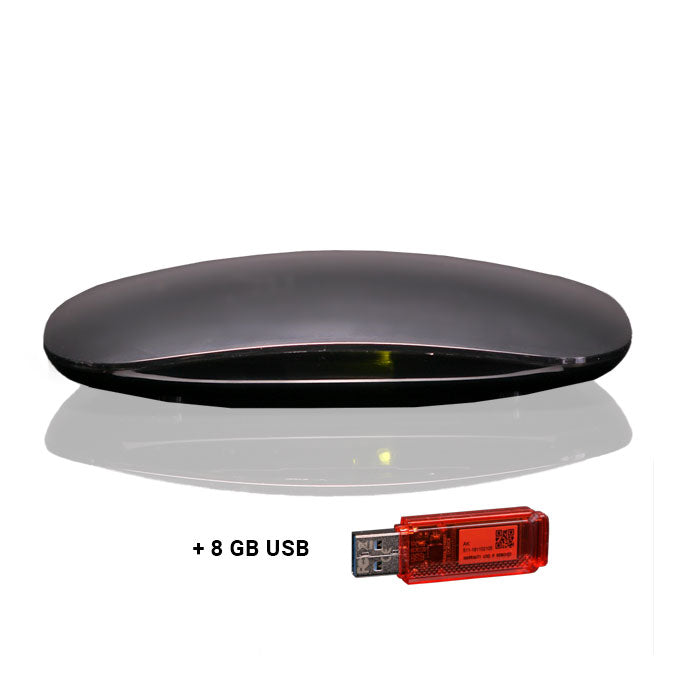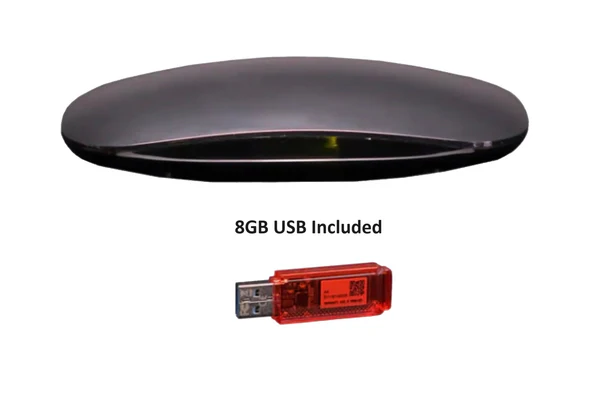A Digital Video Recorder (DVR) is a device that allows you to record television programs and store them for later viewing. With DVRs, you no longer need to miss your favorite shows or sports events. These devices offer convenience by providing pause, rewind, and fast-forward features during live broadcasts. DVRs have become an essential part of modern home entertainment systems, offering seamless integration with TVs and other media devices. Whether you’re a fan of binge-watching or want to catch up on missed episodes, DVRs make it possible to watch on your schedule.
2. How DVRs Work with Television Systems
A DVR connects to your television and receives TV signals from a cable box, satellite, or antenna. It captures the broadcasted programs and stores them on an internal or external hard drive. Modern DVRs offer high-definition (HD) recording, allowing viewers to record content in crystal-clear quality. Some DVRs also offer cloud storage for easy access to recordings from any device. By connecting the DVR to your TV, you can schedule recordings, set up timers, and even record multiple shows simultaneously. The ease of use and flexibility make DVRs indispensable for TV enthusiasts.
3. Benefits of Using a Digital Video Recorder
One of the biggest benefits of using a DVR is the ability to record live TV and watch it at your convenience. DVRs eliminate the stress of missing your favorite shows. Another benefit is the control it gives over your viewing experience. You can pause live TV, rewind to catch a missed moment, or skip over commercials. DVRs also allow for the recording of entire series, so you never miss an episode. With user-friendly interfaces, DVRs provide seamless navigation and a personalized watching experience.
4. Different Types of DVRs for TV
There are various types of DVRs available, depending on your needs. Standalone DVRs, integrated DVRs in cable boxes, and cloud-based DVRs are the most common options. Standalone DVRs work independently and are ideal for those using antennas to receive TV signals. Cable and satellite companies often offer integrated DVRs as part of their packages. Cloud-based DVRs store recordings online, allowing you to access them on different devices. Each type offers unique features, such as storage capacity and recording options, catering to different viewing preferences.
5. Choosing the Right DVR for Your TV Setup
Selecting the right DVR depends on factors like your TV setup, service provider, and viewing habits. If you rely on cable or satellite services, an integrated DVR might be the easiest option. For those using over-the-air antennas, standalone DVRs like TiVo or Tablo are great alternatives. When choosing a DVR, consider storage capacity, the ability to record in HD, and the number of shows it can record at once. Some DVRs also offer smart features like voice control and integration with streaming services, making it essential to match the DVR with your needs.
6. Installation and Setup of a DVR
Installing a DVR for your TV is straightforward. You’ll need to connect the DVR to your TV and any source of programming, such as a cable box or antenna. Most DVRs come with HDMI cables, making the connection to your TV simple. After setup, you can follow the on-screen instructions to configure recording schedules, choose resolution settings, and explore additional features. Some DVRs also allow for internet connectivity, enabling access to streaming services or cloud storage options. A smooth setup ensures that your DVR is ready to record and enhance your TV experience.
7. Key Features of Modern DVRs
Today’s DVRs are packed with advanced features. Many offer HD and 4K recording, ensuring high-quality viewing of recorded content. Modern DVRs come with large storage capacities, allowing users to store hundreds of hours of programming. Another key feature is the ability to pause, rewind, and fast-forward through live television broadcasts. Additionally, DVRs offer smart recording options like season passes, which automatically record every episode of a particular show. Some models even include voice commands and integration with smart home devices, making DVRs more user-friendly and efficient.
8. Recording Multiple Shows at Once
One of the standout features of modern DVRs is the ability to record multiple shows simultaneously. This feature allows you to record different channels at the same time, ensuring that you never miss any of your favorite programs. Depending on the model, DVRs can record anywhere from two to six programs at once. This is particularly useful for households with multiple viewers or during peak TV times when multiple shows air simultaneously. DVRs with this capability ensure that everyone in the household has access to their preferred shows without scheduling conflicts.
9. Cloud-Based DVR Services
Cloud-based DVRs are growing in popularity, offering flexibility and convenience. These DVRs store your recordings on a cloud server rather than an internal hard drive, giving you the ability to access your recorded content from any device with an internet connection. Cloud DVRs are often offered as part of streaming services like YouTube TV, Hulu, and Sling TV. The main advantage of cloud DVRs is that they eliminate the need for physical storage, providing virtually unlimited space for recordings. Cloud DVRs also make it easy to stream content to mobile devices, giving users more freedom in their viewing habits.
10. DVR Storage Capacity: What to Consider
When choosing a DVR, storage capacity is a critical factor. Most DVRs come with built-in hard drives that range from 500GB to 2TB. The amount of storage you need depends on your viewing habits and whether you prefer to keep recordings for long periods. A DVR with 1TB of storage can typically store around 150 hours of HD content. For heavy TV viewers or families, a DVR with more storage might be necessary to accommodate multiple recordings without running out of space. Cloud-based DVRs offer virtually unlimited storage, making them a great choice for those with extensive recording needs.
11. Using DVRs for Live Sports and Events
For sports enthusiasts, DVRs are a game-changer. DVRs allow you to record live sports events and watch them at your convenience. The ability to pause, rewind, and replay key moments enhances the viewing experience for fans. Many DVRs also offer features like slow-motion playback, which can be ideal for reviewing crucial game moments. With a DVR, you can skip commercials and halftime breaks, giving you more control over how you watch live sports. DVRs ensure that you never miss out on the action, even if you're unable to watch in real time.
12. Integrating DVRs with Streaming Services
DVRs are no longer just for recording traditional TV broadcasts. Many modern DVRs offer integration with streaming services like Netflix, Hulu, and Amazon Prime Video. This allows users to manage their recorded TV shows and streaming content from one interface. DVRs with built-in streaming capabilities provide an all-in-one entertainment solution, letting you switch between live TV and streaming services seamlessly. The convenience of having everything in one place is ideal for viewers who consume both cable and streaming content. DVRs that support streaming integration provide a more streamlined and user-friendly experience.
13. Smart DVR Features: Voice Control and More
The evolution of DVRs has introduced smart features like voice control, making it even easier to manage your recordings. With voice commands, you can schedule recordings, play back shows, and search for content without lifting a finger. Smart DVRs also come with advanced features like automatic recording suggestions based on your viewing habits. Some models are compatible with virtual assistants like Amazon Alexa and Google Assistant, further enhancing the hands-free experience. These smart features not only add convenience but also make DVRs more accessible to a wider audience.
14. DVRs vs. On-Demand Streaming
While DVRs offer control over live TV, on-demand streaming services provide instant access to vast libraries of content. Each option has its advantages, with DVRs excelling at recording live broadcasts, and streaming services offering binge-worthy shows and movies at any time. The choice between DVRs and on-demand services depends on your viewing habits. DVRs are ideal for those who prefer live TV, while on-demand streaming is perfect for viewers who enjoy curated content. Many households combine both, using DVRs for live events and streaming services for other entertainment.
15. The Future of Digital Video Recorders
As technology evolves, DVRs continue to improve. The future of DVRs may include even greater integration with smart home devices, advanced AI features for content recommendations, and enhanced compatibility with streaming services. Storage capacity will likely increase, and cloud-based solutions may become the standard. As more viewers move towards internet-based content, DVRs are adapting to remain relevant by incorporating streaming and on-demand features. The future of DVRs promises to deliver more convenience, control, and flexibility for TV viewers, ensuring that they remain a valuable tool for home entertainment.
FAQs
What is a Digital Video Recorder (DVR)? A DVR is a device that records television programs for later viewing. It allows you to pause, rewind, and fast-forward through live TV and store shows on a hard drive.
Can I use a DVR with an antenna? Yes, standalone DVRs like TiVo and Tablo are designed to work with over-the-air antennas, allowing you to record live broadcasts from local TV channels.
Do DVRs have storage limits? Yes, most DVRs come with a built-in hard drive with storage limits, typically ranging from 500GB to 2TB. Cloud-based DVRs offer virtually unlimited storage.
Can I record multiple shows at once? Yes, many DVRs allow you to record multiple shows simultaneously, depending on the number of tuners the device has. Some DVRs can record up to six shows at the same time.




